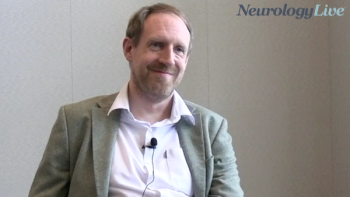
The Road Ahead in Myasthenia Gravis
Panelists discuss how the future of myasthenia gravis treatment will involve expanded use of targeted therapies, combination treatment approaches, oral therapeutic options, earlier intervention strategies, and the need for better economic data and updated guidelines to support optimal patient care.
Episodes in this series

The future of myasthenia gravis management appears increasingly promising, with expectations for dramatic changes in treatment paradigms over the next 3 to 5 years driven by emerging therapies targeting upstream immunological mechanisms. Current biologic utilization remains relatively low at 30% to 40% of the myasthenia population due to outdated guidelines and insurance authorization challenges, but future scenarios anticipate widespread adoption of targeted therapies as primary treatment approaches rather than reserving them for refractory cases.
Emerging therapeutic developments include B-cell inhibitors, treatments preventing B-cell activation, oral therapeutic options, and combination therapy approaches that may achieve higher rates of minimal symptom expression than current monotherapy strategies. The treatment paradigm shift moves from questioning whether to use biologics toward determining which agents to select and whether combination approaches benefit specific patient populations. This evolution parallels the need for earlier intervention strategies that protect neuromuscular junction integrity and prevent permanent receptor loss.
Key challenges requiring resolution include development of better biomarkers for treatment selection, comprehensive economic analyses comparing treatment approaches, and updated clinical guidelines incorporating recent therapeutic advances. The exciting prospect of oral therapies addresses patient preferences for convenience and reduced invasiveness compared to infusion-based treatments. Health care economic data collection becomes crucial for supporting combination therapies and early intervention strategies with payers. Future success depends on generating robust evidence for combination approaches, early treatment benefits, and cost-effectiveness analyses that support optimal patient care while addressing health care system sustainability concerns in myasthenia gravis management.
Newsletter
Keep your finger on the pulse of neurology—subscribe to NeurologyLive for expert interviews, new data, and breakthrough treatment updates.
































